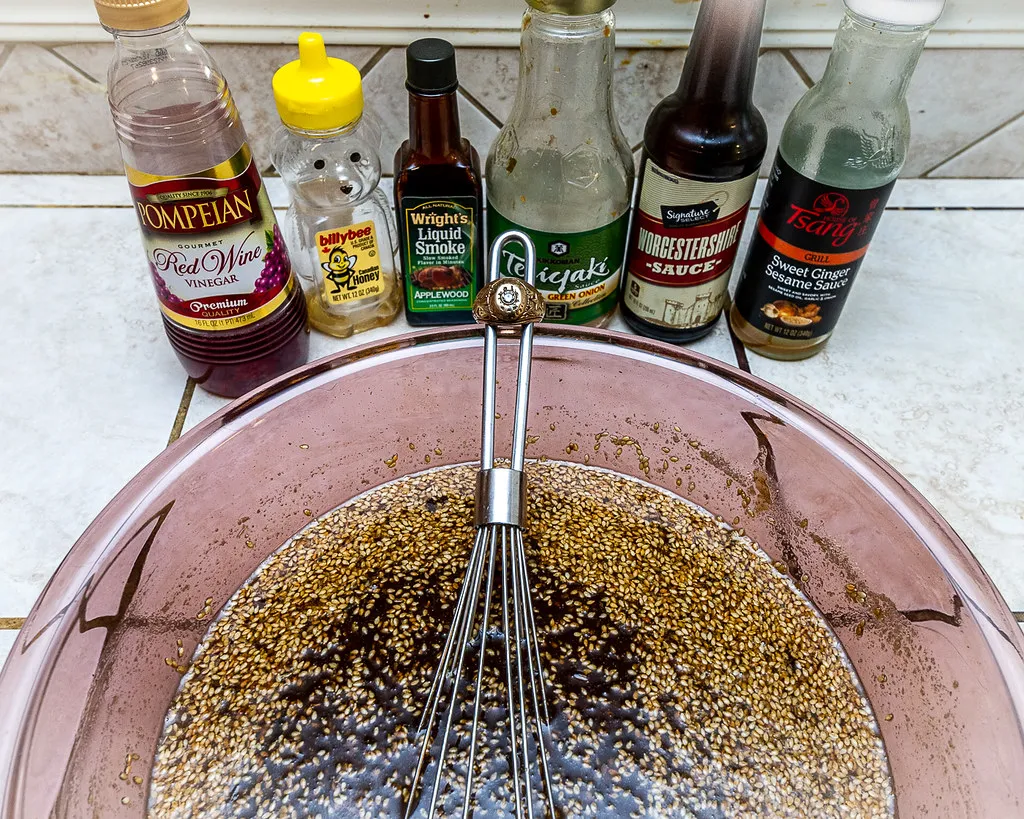The Best Fluffy Pancakes recipe you will fall in love with. Full of tips and tricks to help you make the best pancakes.
Asian street meat is a feast for the senses—sizzling grills, smoky aromas, and bold flavors that make every bite unforgettable. Across bustling night markets and roadside stalls, street vendors serve up an irresistible variety of grilled and fried meats, each dish reflecting the unique flavors of its region.
From Thailand’s sweet and smoky Moo Ping to Japan’s perfectly charred Yakitori, Asian street food culture is built on time-honored cooking techniques, secret marinades, and a passion for bold seasonings. Whether skewered, slow-roasted, or deep-fried to crispy perfection, these dishes showcase the rich culinary diversity of Asia.
In this guide, we’ll explore some of the most mouthwatering Asian street meat recipes, diving into the best grilled and fried specialties, the secrets behind their authentic flavors, and where to experience them for yourself. Ready to take a flavorful journey through the streets of Asia? Let’s dig in!
The Irresistible Charm of Asian Street Meat
Asian street meat is more than just food—it’s an experience that brings together culture, tradition, and mouthwatering flavors. Across Asia, street food vendors master the art of grilling, frying, and seasoning meats to perfection, creating dishes that are not only affordable but also bursting with bold, unforgettable tastes. Whether it’s the smoky aroma of skewers sizzling over an open flame or the satisfying crunch of deep-fried delights, Asian street meat has an irresistible appeal that keeps locals and travelers coming back for more.

Why Asian Street Meat is a Must-Try Experience
There’s a reason why Asian street meat is a favorite among food lovers worldwide. It’s not just about convenience—it’s about the craftsmanship behind every dish. Unlike restaurant-style cooking, street vendors specialize in perfecting one or two signature dishes, often using secret family recipes passed down for generations. The result? Intensely flavorful, perfectly cooked meats with the right balance of spices, marinades, and textures.
The Role of Street Food in Asian Culture and Night Markets
Street food plays a vital role in many Asian countries, serving as a hub for social gatherings, late-night snacks, and everyday meals. From Thailand’s bustling night markets to Taiwan’s famous street food stalls, locals and tourists alike gather around makeshift grills and food carts, enjoying freshly cooked meats straight off the skewer. It’s a communal experience where food isn’t just about nourishment—it’s about connection, tradition, and storytelling.
In countries like Japan and Korea, street food stalls serve as quick stops for workers looking for a hearty meal after a long day. In the Philippines, grilled meats like Isaw (grilled chicken intestines) and Lechon Manok (roast chicken) are staples at family gatherings and celebrations. This deep cultural connection to food makes Asian street meat not just a culinary delight, but a symbol of heritage and hospitality.
How Grilling and Frying Enhance Flavors
One of the reasons Asian street meat is so addictive is the cooking method. Grilling imparts a deep, smoky char, enhancing the umami and caramelized flavors of marinades. The high heat sears the meat quickly, locking in juices and creating a perfect balance of tenderness and crispiness. Dishes like Satay (Indonesia, Malaysia) and Yakitori (Japan) are prime examples of how grilling over charcoal elevates meat to a whole new level.
On the other hand, frying transforms meat into a crunchy, golden delight. Asian street markets are famous for deep-fried specialties like Korean Fried Chicken, which is twice-fried for an ultra-crispy texture, and Taiwanese Popcorn Chicken, which gets a fragrant five-spice seasoning. The frying process enhances both texture and flavor, making each bite incredibly satisfying.
Grilled Delights: Must-Try Asian Street Meat Recipes
When it comes to street food, nothing beats the smoky, charred flavors of grilled meat sizzling over an open flame. Across Asia, grilling is a time-honored cooking method, perfected by street vendors who know exactly how to balance heat, seasoning, and cooking time to achieve tender, juicy, and flavorful meats. Whether marinated in bold spices, coated with a rich glaze, or simply seasoned with salt and pepper, grilled street meat is a must-try for food lovers.
In this section, we’ll explore some of the most iconic grilled meat dishes found in Asian street markets, from Thailand’s sweet and smoky Moo Ping to Japan’s perfectly charred Yakitori.

Satay (Indonesia, Malaysia) – Skewered and Grilled Meat with Peanut Sauce
Satay is one of the most popular street foods in Southeast Asia, especially in Indonesia and Malaysia. This dish consists of skewered, marinated meats (such as chicken, beef, or lamb) that are grilled over charcoal and served with a rich, creamy peanut sauce.
What Makes It Special?
- The meat is marinated in a blend of turmeric, lemongrass, garlic, and coconut milk, giving it a golden color and deep, aromatic flavor.
- Grilled over open flames, satay develops a light char and smoky aroma.
- Served with sweet and spicy peanut sauce, along with cucumber slices and rice cakes.
Where to Try It?
- Geylang Serai Market in Singapore
- Jalan Alor in Kuala Lumpur, Malaysia
- Street vendors in Jakarta, Indonesia
How to Make Satay at Home
Satay is surprisingly easy to make at home with just a few key ingredients. The secret lies in marinating the meat properly and achieving that perfectly smoky, slightly charred flavor when grilling. Here’s a step-by-step guide to making authentic satay at home.
Ingredients:
- 500g (1 lb) chicken, beef, or lamb, cut into bite-sized pieces
- Wooden skewers, soaked in water for 30 minutes
- 1/2 cup coconut milk
- 1 tbsp turmeric powder
- 2 cloves garlic, minced
- 1 tbsp lemongrass, finely chopped
- 1 tbsp soy sauce
- 1 tbsp brown sugar
- 1 tsp coriander powder
- 1 tsp cumin powder
- 1/2 tsp salt
- 1 tbsp vegetable oil (for grilling)
Instructions:
- Prepare the Marinade: In a bowl, mix coconut milk, turmeric, minced garlic, lemongrass, soy sauce, brown sugar, coriander, cumin, and salt. Stir well to create a thick marinade.
- Marinate the Meat: Add the chicken, beef, or lamb pieces to the marinade, ensuring they are well-coated. Cover and refrigerate for at least 2 hours (overnight for deeper flavor).
- Prepare the Skewers: Thread the marinated meat onto soaked wooden skewers, packing them tightly but not overcrowding.
- Grill the Satay: Preheat a grill or stovetop grill pan to medium-high heat. Brush with vegetable oil and grill the skewers for 8-10 minutes, turning frequently until the meat is charred and cooked through.
- Make the Peanut Sauce: Blend together 1/2 cup roasted peanuts, 1/4 cup coconut milk, 1 tbsp soy sauce, 1 tbsp lime juice, 1 tsp chili flakes, and 1 tbsp brown sugar until smooth.
- Serve and Enjoy: Arrange the grilled satay on a plate, drizzle with peanut sauce, and serve with cucumber slices and rice cakes on the side.
To complement these delicious street meat dishes, a fresh and crunchy Asian salad is the perfect side. Check out these unbelievably delicious Asian salad recipes to complete your meal.
Yakitori (Japan) – Charcoal-Grilled Chicken Skewers
A staple of Japanese street food, Yakitori consists of bite-sized pieces of chicken grilled on skewers and brushed with tare sauce (a sweet-savory glaze similar to teriyaki). You’ll find Yakitori stalls all over Japan, from bustling food markets to casual izakayas (Japanese pubs).
What Makes It Special?
- Cooked over binchotan charcoal, giving it a distinct smoky flavor.
- Uses various parts of the chicken, including thighs, wings, and even liver.
- Brushed with tare sauce (soy sauce, mirin, sake, and sugar) for a sweet and salty finish.
Where to Try It?
- Omoide Yokocho in Tokyo, Japan
- Nishiki Market in Kyoto, Japan
- Osaka’s Dotonbori district
How to Make Yakitori at Home
Yakitori is a simple yet flavorful Japanese grilled chicken dish. Traditionally cooked over binchotan charcoal, this dish can also be made on a regular grill or stovetop grill pan.
Ingredients:
- 500g (1 lb) chicken thighs or breast, cut into bite-sized pieces
- Wooden skewers, soaked in water for 30 minutes
- 1/4 tsp salt
- 1 tbsp vegetable oil (for grilling)
For the Tare Sauce:
- 1/4 cup soy sauce
- 2 tbsp mirin (sweet rice wine)
- 1 tbsp sake
- 1 tbsp brown sugar
- 1/2 tsp grated ginger
Instructions:
- Prepare the Tare Sauce: In a saucepan, combine soy sauce, mirin, sake, brown sugar, and grated ginger. Simmer over low heat for 5 minutes until slightly thickened. Set aside.
- Prepare the Chicken: Thread chicken pieces onto the soaked skewers. Sprinkle lightly with salt for a simple version, or get ready to brush with tare sauce.
- Grill the Yakitori: Preheat a charcoal grill, gas grill, or grill pan to medium-high heat. Brush with vegetable oil.
- Cooking Process:
- Place skewers on the grill and cook for 2-3 minutes per side.
- Begin brushing with tare sauce during the last few minutes of cooking, turning frequently to caramelize the glaze.
- Serve and Enjoy: Transfer the skewers to a plate, brush with a final coat of tare sauce, and sprinkle with shichimi togarashi (Japanese chili spice mix). Serve with steamed rice or a side of pickled vegetables.
Moo Ping (Thailand) – Sweet and Smoky Grilled Pork Skewers
Moo Ping is a favorite Thai street food featuring grilled pork skewers marinated in a mix of garlic, soy sauce, oyster sauce, and coconut milk. These skewers are often served with sticky rice and a side of spicy dipping sauce.
What Makes It Special?
- Marinated in coconut milk, which keeps the pork tender and juicy.
- Grilled over charcoal for a slightly smoky, caramelized flavor.
- Often served with Nam Jim Jaew (a tangy and spicy dipping sauce).
Where to Try It?
- Chatuchak Market in Bangkok, Thailand
- Chiang Mai’s Night Bazaar
- Street vendors in Phuket and Pattaya
How to Make Moo Ping at Home
Moo Ping is a simple yet flavorful Thai street food that delivers a sweet, smoky, and juicy bite in every skewer. The key is marinating the pork properly and grilling it to perfection over charcoal.
Ingredients:
- 500g (1 lb) pork shoulder or pork belly, sliced into thin strips
- Wooden skewers, soaked in water for 30 minutes
- 1/4 cup coconut milk
- 2 tbsp oyster sauce
- 1 tbsp soy sauce
- 1 tbsp fish sauce
- 1 tbsp brown sugar or palm sugar
- 2 cloves garlic, minced
- 1/2 tsp white pepper
- 1 tbsp vegetable oil (for grilling)
For the Dipping Sauce (Nam Jim Jaew):
- 2 tbsp fish sauce
- 1 tbsp lime juice
- 1 tsp chili flakes
- 1 tsp toasted rice powder
- 1 tsp sugar
- 1 tbsp chopped cilantro
Instructions:
- Prepare the Marinade: In a bowl, mix coconut milk, oyster sauce, soy sauce, fish sauce, brown sugar, garlic, and white pepper. Stir until well combined.
- Marinate the Pork: Add the pork slices to the marinade, ensuring they are fully coated. Cover and refrigerate for at least 2 hours (overnight for maximum flavor).
- Prepare the Skewers: Thread the marinated pork onto the soaked wooden skewers, keeping the slices slightly overlapping.
- Grill the Moo Ping: Preheat a charcoal grill or stovetop grill pan to medium-high heat. Brush with vegetable oil and grill the skewers for 5-7 minutes per side, turning frequently until golden brown and slightly caramelized.
- Make the Dipping Sauce: Mix fish sauce, lime juice, chili flakes, toasted rice powder, sugar, and chopped cilantro in a small bowl.
- Serve and Enjoy: Arrange the grilled skewers on a plate and serve with sticky rice and Nam Jim Jaew dipping sauce for an authentic Thai street food experience.
Char Siu (China, Hong Kong) – Cantonese BBQ Pork with a Sweet-Savory Glaze
Char Siu is a Cantonese-style barbecued pork that is known for its sweet, savory, and slightly smoky flavor. The pork is marinated in a honey-based glaze and slow-roasted over a fire or grill, creating a caramelized, slightly crispy exterior.
What Makes It Special?
- Uses pork shoulder or pork belly, making it tender and juicy.
- Marinated in a blend of hoisin sauce, soy sauce, honey, and five-spice powder.
- Cooked over charcoal or roasted in an oven for a slightly crispy, caramelized crust.
Where to Try It?
- Hong Kong’s famous roast meat stalls
- Taiwan’s night markets
- Chinatowns around the world
How to Make Char Siu at Home
Char Siu is a rich, flavorful Cantonese BBQ pork dish that is juicy on the inside with a beautifully caramelized crust on the outside.
Ingredients:
- 500g (1 lb) pork shoulder or pork belly, cut into long strips
- 2 tbsp hoisin sauce
- 2 tbsp honey
- 1 tbsp soy sauce
- 1 tbsp oyster sauce
- 1 tbsp Shaoxing wine (or dry sherry)
- 1 tsp five-spice powder
- 2 cloves garlic, minced
- 1/2 tsp red food coloring (optional, for traditional red color)
- 1 tbsp vegetable oil (for roasting or grilling)
Instructions:
- Prepare the Marinade: In a bowl, mix hoisin sauce, honey, soy sauce, oyster sauce, Shaoxing wine, five-spice powder, garlic, and red food coloring. Stir well.
- Marinate the Pork: Coat the pork strips in the marinade. Cover and refrigerate for at least 4 hours, ideally overnight.
- Cooking Options:
- Oven Method: Preheat the oven to 375°F (190°C). Place the marinated pork on a wire rack over a baking sheet lined with foil. Roast for 30-40 minutes, flipping halfway through. Brush with extra marinade and cook for another 5 minutes under the broiler for a slightly crispy, caramelized crust.
- Grill Method: Preheat a grill to medium-high heat. Brush with vegetable oil and grill the pork for 7-8 minutes per side, basting with extra marinade, until slightly charred and caramelized.
- Serve and Enjoy: Slice the Char Siu into thin pieces and serve with steamed rice, inside a bao bun, or with stir-fried noodles.
If you love Asian street meat but don’t have access to an outdoor grill, this smokeless indoor grill and griddle is a great alternative. Designed for high-performance cooking, it allows you to achieve authentic grilled flavors without smoke or charcoal. Its advanced airflow system minimizes smoke, making it perfect for indoor use. The interchangeable grill and griddle plates provide versatility, allowing you to cook skewers like satay and yakitori or sear meats like char siu on a flat surface. With powerful heating elements, it reaches high temperatures quickly, ensuring even cooking and a delicious char. Cleanup is simple, as the removable plates are dishwasher-safe. Its compact design makes it ideal for small kitchens or apartments, offering a convenient way to enjoy the flavors of street-style grilled meats at home. Check it out on Amazon.
Crispy and Fried: Asian Street Meat Favorites
Fried street meats are crispy, golden, and packed with bold flavors. Across Asia’s bustling street markets, vendors have mastered frying techniques that result in perfectly crunchy exteriors and juicy, flavorful interiors. Whether it’s double-fried Korean Fried Chicken, bite-sized Taiwanese Popcorn Chicken, or the crispy pork belly of Filipino Lechon Kawali, these dishes are a must-try!
Let’s dive into some of the best fried Asian street meat recipes and how you can make them at home.

Korean Fried Chicken (South Korea) – Twice-Fried for Ultimate Crunch
What Makes It Special?
- Double-fried to remove moisture, creating an ultra-crispy crust.
- Coated in spicy gochujang sauce, garlic soy glaze, or honey butter sauce.
- Often served with pickled radish and cold beer.
How to Make It at Home
Ingredients:
- 1.5 lbs (700g) chicken wings or drumsticks
- 1 tsp salt
- 1/2 tsp black pepper
- 1 tbsp garlic powder
- 1 tbsp ginger powder
- 1 cup potato starch (or cornstarch)
- 1/2 cup all-purpose flour
- 1 egg
- 1/2 cup cold water
- Oil for frying
For the Spicy Gochujang Sauce:
- 2 tbsp gochujang (Korean chili paste)
- 2 tbsp honey
- 1 tbsp soy sauce
- 1 tbsp rice vinegar
- 2 cloves garlic, minced
- 1 tbsp sesame oil
Instructions:
- Season the chicken with salt, black pepper, garlic powder, and ginger powder.
- In a bowl, mix potato starch, flour, egg, and cold water to make a thin batter.
- Coat the chicken in the batter and let it sit for 5 minutes.
- First Fry: Heat oil to 325°F (160°C) and fry chicken for 6–7 minutes until lightly golden. Remove and let rest.
- Second Fry: Increase oil temperature to 375°F (190°C) and fry again for 2–3 minutes until crispy.
- Prepare the sauce: In a pan, heat sesame oil, add garlic, then stir in gochujang, honey, soy sauce, and vinegar. Cook for 1-2 minutes.
- Toss the chicken in the sauce and serve with sesame seeds and green onions!
Taiwanese Popcorn Chicken – Bite-Sized Crispy Delight
What Makes It Special?
- Uses sweet potato starch for a crispy, airy texture.
- Seasoned with five-spice powder, white pepper, and chili powder.
- Fried basil leaves add a unique aromatic crunch.
How to Make It at Home
Ingredients:
- 1 lb (450g) boneless chicken thighs, cut into bite-sized pieces
- 2 tbsp soy sauce
- 1 tbsp Shaoxing wine (or rice wine)
- 1 tsp five-spice powder
- 1/2 tsp white pepper
- 1/2 tsp garlic powder
- 1/2 cup sweet potato starch (or cornstarch)
- 1 egg white
- 1 cup fresh basil leaves
- Oil for frying
Instructions:
- In a bowl, marinate the chicken with soy sauce, Shaoxing wine, five-spice powder, white pepper, and garlic powder. Let sit for 30 minutes.
- Coat the chicken in egg white, then dredge in sweet potato starch.
- Heat oil to 350°F (175°C) and fry the chicken in batches for 3-4 minutes until light golden. Remove and let rest.
- Fry the basil leaves for a few seconds until crispy. Be careful as they may splatter!
- Refry the chicken at 375°F (190°C) for 1-2 minutes to enhance crispiness.
- Sprinkle with extra white pepper, salt, and chili powder before serving.
Lechon Kawali (Philippines) – Crispy Pork Belly Chunks
What Makes It Special?
- Uses pork belly, making it both crispy and juicy.
- Boiled before frying to ensure tenderness.
- Served with spiced vinegar, liver sauce, or soy calamansi dip.
How to Make It at Home
Ingredients:
- 2 lbs (900g) pork belly
- 1 tbsp salt
- 1 tsp black peppercorns
- 3 cloves garlic, smashed
- 2 bay leaves
- Oil for frying
For the Dipping Sauce:
- 1/4 cup vinegar
- 2 cloves garlic, minced
- 1 tbsp soy sauce
- 1 tsp sugar
- 1 chili pepper, chopped (optional)
Instructions:
- Boil the pork belly: In a pot, add pork belly, salt, peppercorns, garlic, bay leaves, and enough water to cover. Boil for 1.5 hours until fork-tender.
- Drain and let the pork dry completely. Refrigerate for a few hours for extra crispiness.
- Heat oil to 375°F (190°C). Fry the pork belly skin-side down for 7-10 minutes until crispy. Flip and fry the other side.
- Remove, let cool slightly, then cut into bite-sized chunks.
- Prepare the sauce: Mix vinegar, garlic, soy sauce, sugar, and chili. Serve with the crispy pork!
Tempura (Japan) – Light and Crispy Fried Perfection
What Makes It Special?
- Uses a delicate, airy batter made from ice-cold water.
- Fried at just the right temperature to achieve a crispy yet light texture.
- Can be made with chicken, shrimp, fish, or vegetables.
How to Make It at Home
Ingredients:
- 1 lb (450g) shrimp or chicken breast, sliced thinly
- 1 cup all-purpose flour
- 1 egg yolk
- 1 cup ice-cold water
- 1/2 cup cornstarch
- Oil for frying
For the Tempura Sauce:
- 1/2 cup dashi broth
- 2 tbsp soy sauce
- 1 tbsp mirin (Japanese sweet rice wine)
- 1 tsp sugar
Instructions:
- Prepare the batter: In a bowl, lightly mix flour, egg yolk, and ice-cold water. Do not overmix—small lumps are okay.
- Coat the shrimp or chicken lightly in cornstarch, then dip into the batter.
- Heat oil to 350°F (175°C) and fry until light golden (about 2 minutes).
- Prepare the sauce: Heat dashi broth, soy sauce, mirin, and sugar together. Serve warm with tempura.
The Secret to Authentic Asian Street Meat Flavors
The magic of Asian street meat lies in its bold marinades, smoky char, and unique spice blends. Vendors across Thailand, China, Japan, Korea, and the Philippines have perfected their flavors through centuries-old techniques, locally sourced ingredients, and a deep understanding of balance—sweet, salty, sour, spicy, and umami all coming together in perfect harmony.
If you’ve ever wondered why street meat from a Bangkok night market or a Tokyo food stall tastes so irresistible, it’s because of carefully crafted marinades, grilling or frying mastery, and flavorful dipping sauces. Let’s break down the secrets to achieving these flavors at home.

The Power of Marinades and Seasonings
Marinades are the foundation of great street meat, helping to infuse flavors deep into the meat and tenderize tougher cuts. Many Asian street food vendors use overnight marinades, allowing the flavors to fully absorb before cooking.
Common Ingredients in Asian Marinades
| Ingredient | Role in Flavor |
|---|---|
| Soy sauce | Adds saltiness and umami depth |
| Oyster sauce | Boosts richness and savoriness |
| Fish sauce | Brings a deep, salty umami kick |
| Rice vinegar | Balances the flavors with acidity |
| Hoisin sauce | Adds sweetness and a thick texture |
| Gochujang (Korean chili paste) | Provides heat and depth |
| Tamarind paste | Offers tanginess in Thai and Filipino dishes |
| Lemongrass & galangal | Infuses a citrusy, herbal aroma |
| Garlic & ginger | Essential for spice and warmth |
| Brown sugar or honey | Helps caramelize the meat |
Examples of Classic Marinades
- Thai-Style Grilled Meat Marinade: Soy sauce, oyster sauce, fish sauce, palm sugar, garlic, coriander root, and white pepper
- Korean Bulgogi Marinade: Soy sauce, sesame oil, grated pear, garlic, ginger, and gochujang
- Japanese Yakitori Marinade: Soy sauce, mirin, sake, sugar, and dashi
Marinate your meat for at least four hours (or overnight) for the best flavor.
Cooking Techniques That Make a Difference
Grilling Over Charcoal for Smoky Depth
The use of charcoal grilling is one of the biggest secrets behind authentic Asian street meat flavors. The open flame enhances caramelization, adds smokiness, and creates the signature charred edges found in dishes like Thai Moo Ping, Japanese Yakitori, and Filipino BBQ skewers.
How to Recreate This at Home:
- Use lump charcoal or a grill pan to get the smokiness
- Baste meat with extra marinade while grilling to build layers of flavor
- Let the meat rest for a few minutes after grilling to retain its juiciness
Double-Frying for Extra Crispiness
For crispy street meat like Korean Fried Chicken or Taiwanese Popcorn Chicken, the double-frying technique is key. The first fry cooks the meat through, while the second fry at a higher temperature locks in a crunchy, golden crust.
How to Recreate This at Home:
- Use potato starch or rice flour for a light, crisp coating
- Fry at a lower temp (325°F) first, then again at 375°F
- Drain fried meat on a wire rack to keep it crispy
The Role of Dipping Sauces
Dipping sauces are a crucial part of the street food experience, adding a final layer of heat, tang, sweetness, or umami.
Popular Street Meat Dipping Sauces
| Sauce | Flavor Profile | Pairs Well With |
|---|---|---|
| Sweet Chili Sauce | Sweet, tangy, spicy | Thai satay, grilled meats |
| Gochujang Mayo | Creamy, spicy, umami | Korean Fried Chicken, tempura |
| Soy-Vinegar Dip | Salty, tangy | Filipino Lechon Kawali, BBQ pork skewers |
| Peanut Satay Sauce | Nutty, rich, slightly sweet | Chicken satay, beef skewers |
| Tonkatsu Sauce | Sweet, tangy, Worcestershire-like | Japanese katsu, fried chicken |
Make extra sauce and use it as a marinade or glaze while grilling.
Balancing Flavors Like a Street Food Master
The reason Asian street meat tastes so addictive is the perfect balance of flavors:
- Sweet (sugar, honey, hoisin, fruit purees)
- Salty (soy sauce, fish sauce, salt)
- Sour (lime, tamarind, vinegar)
- Spicy (chili, gochujang, Sichuan peppercorns)
- Umami (miso, oyster sauce, mushrooms)
Each dish leans toward one or two dominant flavors but always maintains a harmonious balance.
Essential Ingredients to Stock in Your Kitchen
If you want to make authentic Asian street meat at home, keep these essentials in your pantry:
Must-Have Ingredients:
- Soy sauce (light & dark) – A base for many marinades
- Fish sauce – Adds deep umami flavor
- Rice vinegar & lime – For acidity and freshness
- Sesame oil – Enhances aroma and depth
- Five-spice powder – Essential for Taiwanese & Chinese dishes
- Chili flakes & Sichuan peppercorns – For heat and numbness
- Palm sugar or brown sugar – For caramelization
- Coconut milk – For richness in Southeast Asian flavors
- Cornstarch or potato starch – For crispy coatings
Buy fresh lemongrass, ginger, and garlic in bulk, as they’re the backbone of many recipes.
Where to Experience the Best Asian Street Meat
Asia’s street food culture is legendary, offering some of the most flavorful and affordable eats in the world. From bustling night markets in Taiwan to smoky roadside grills in Thailand, each country has its own unique street meat specialties. Whether you’re traveling to Asia or looking for inspiration to recreate these flavors at home, here’s a guide to the best places to experience authentic Asian street meat.

Bangkok, Thailand – The Ultimate Grilled Meat Paradise
Thailand is a haven for street food lovers, and Bangkok’s night markets are packed with sizzling skewers, grilled meats, and spicy dipping sauces.
Must-Try Street Meat in Bangkok
- Moo Ping (Grilled Pork Skewers) – Juicy pork marinated in a sweet and savory glaze, then grilled over charcoal and served with sticky rice.
- Gai Yang (Thai Grilled Chicken) – Marinated in garlic, coriander root, fish sauce, and coconut milk before being grilled to perfection.
- Sai Krok Isan (Fermented Pork Sausages) – Slightly tangy, garlicky sausages grilled until crisp and often served with fresh cabbage and chili.
Where to Find It
- Chatuchak Weekend Market – One of the largest markets in the world, famous for its variety of street meat stalls.
- Yaowarat Road (Chinatown Bangkok) – A great spot for grilled meats, crispy pork belly, and roasted duck.
- Sukhumvit Soi 38 – Known for classic Thai street food, including grilled pork skewers and chicken satay.
Taipei, Taiwan – The Home of Crispy and Flavorful Street Meat
Taiwanese night markets are famous for their fried and grilled delicacies, with vendors perfecting their recipes over generations.
Must-Try Street Meat in Taipei
- Taiwanese Popcorn Chicken – Bite-sized chicken pieces marinated with five-spice powder, deep-fried, and sprinkled with basil leaves for extra fragrance.
- Black Pepper Pork Buns – Crispy, pan-fried buns stuffed with juicy, peppery pork filling.
- Taiwanese Sausage with Sticky Rice – A sweet, smoky pork sausage served inside a sticky rice bun, topped with garlic and pickled vegetables.
Where to Find It
- Raohe Night Market – Famous for black pepper pork buns and grilled sausages.
- Shilin Night Market – The largest night market in Taipei, offering a variety of fried and grilled street meats.
- Ningxia Night Market – A great place for smaller, traditional vendors with authentic flavors.
Seoul, South Korea – The Best for Spicy and Savory Treats
South Korea is known for its bold flavors, and street meat here is often marinated with gochujang (Korean chili paste) or soy-based glazes for a perfect blend of sweet, savory, and spicy.
Must-Try Street Meat in Seoul
- Dakkochi (Korean Chicken Skewers) – Juicy chicken skewers brushed with a spicy-sweet sauce and grilled over charcoal.
- Sundubu Bulgogi (Spicy Marinated Beef) – Thinly sliced beef marinated in a spicy, savory bulgogi sauce and grilled over an open flame.
- Korean Fried Chicken – Extra crispy, double-fried chicken coated in a sticky, spicy, or sweet glaze.
Where to Find It
- Myeongdong Street Market – A famous food street with a variety of grilled and fried meat stalls.
- Gwangjang Market – One of the oldest markets in Seoul, known for authentic Korean street food.
- Hongdae Street Food Alley – Popular among young people, offering creative and modern street food twists.
Tokyo, Japan – A Haven for Yakitori and Robatayaki
Japanese street food culture is all about precision and simplicity, with a focus on high-quality ingredients and expert grilling techniques.
Must-Try Street Meat in Tokyo
- Yakitori (Grilled Chicken Skewers) – Skewered chicken grilled over charcoal and seasoned with either salt or a tare (soy-based) glaze.
- Karaage (Japanese Fried Chicken) – Marinated, lightly coated, and deep-fried for a juicy, crispy bite.
- Kushiyaki (Assorted Grilled Skewers) – A variety of skewered meats, including beef, pork, and seafood, cooked on a robata grill.
Where to Find It
- Omoide Yokocho (Piss Alley, Shinjuku) – Famous for small yakitori stalls serving grilled skewers with cold beer.
- Tsukiji Outer Market – Great for trying seafood-based street meats like grilled scallops and eel skewers.
- Ameya-Yokocho (Ueno) – A lively shopping street with affordable street food stalls.
Manila, Philippines – The Best for BBQ and Exotic Eats
Filipino street food is known for its bold, smoky, and slightly sweet flavors, with influences from Spanish, Chinese, and Malay cuisines.
Must-Try Street Meat in Manila
- Isaw (Grilled Chicken or Pork Intestines) – Marinated, skewered, and grilled to perfection, served with a vinegar dipping sauce.
- Filipino BBQ Pork Skewers – Thinly sliced pork marinated in a sweet and savory banana ketchup glaze, then grilled over charcoal.
- Balut (Fertilized Duck Egg) – A famous street food delicacy that’s often paired with beer.
Where to Find It
- Mercato Centrale (Bonifacio Global City) – A great night market for trying different street meats.
- Dampa Seafood Market – Known for fresh grilled seafood and BBQ stalls.
- Quiapo & Divisoria Markets – Bustling areas where you can find authentic Filipino street food.






We are a group of volunteers and opening a new scheme
in our community. Your website provided us with valuable info to work
on. You’ve done a formidable job and our entire community will be
grateful to you.
When I originally commented I clicked the “Notify me when new comments are added” checkbox and now each
time a comment is added I get four e-mails with the same comment.
Is there any way you can remove me from that service?
Bless you!
Thanks designed for sharing such a good thought,
piece of writing is nice, thats why i have read it fully
You can definitely see your expertise within the work you
write. The world hopes for more passionate writers like you who aren’t afraid to say how they believe.
All the time go after your heart.
Appreciating the hard work you put into your blog and in depth information you provide.
It’s good to come across a blog every once in a while that isn’t the same unwanted rehashed information. Fantastic read!
I’ve saved your site and I’m adding your RSS feeds
to my Google account.
These are actually great ideas in about blogging.
You have touched some nice things here. Any way keep up wrinting.
Howdy! This article couldn’t be written any better! Reading through this post reminds me of my previous roommate!
He always kept preaching about this. I will forward this information to
him. Fairly certain he’s going to have a great
read. I appreciate you for sharing!
Howdy this is somewhat of off topic but I was wanting to know if blogs use WYSIWYG editors or if you have to manually code with HTML. I’m starting a blog soon but have no coding know-how so I wanted to get advice from someone with experience. Any help would be greatly appreciated!
Thanks for sharing your thoughts on bokep viral bocil.
Regards
It’s very straightforward to find out any matter on net as compared to textbooks, as I found this article at this
website.